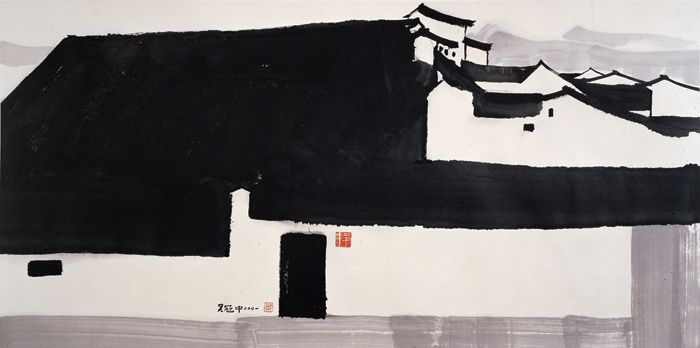HVAC systems… what are they?

A short explainer on HVAC.
HVAC stands for heating, ventilation, and air conditioning. When we say “HVAC” we most often mean the TECHNOLOGICAL SYSTEMS that deliver heating, ventilation, and air conditioning in a building. Most commonly, a single HVAC system delivers all three of these functions (although decoupled systems are on the rise). Here, we’ll further compartmentalize what an HVAC system really does:
- Manage ventilation
- Manage sensible loads
- Manage latent loads
- Manage distribution across a space
- BONUS: Manage air quality
With some quick research, you’ll realize that HVAC systems are different across the world. They’re actually different building to building on the same block! The description below aims to remain high level, to discuss the function of the system regardless of the particular technology. (But, we’ll mostly focus on mechanical– as opposed to natural– ventilation systems here, for spaces where humans spend the majority of their time.)
Ventilation
Building ventilation refers to the supply of fresh (outdoor) and clean (filtered) air, as well as the exhaust of “dirty” air. The ratio of supply (intake) and relief / exhaust airflow ultimately impacts building and room pressure. You can learn more about controlling building pressure in this Trane explainer document.
Ventilation can either be described in absolute terms (liters per second per person OR cubic feet per minute per person) or in per room terms: new air added per total room volume of air (air changes per hour). Being in a “well ventilated” room means you have a high amount of fresh air coming in (and dirty air exhausted out), frequently.
When we talk about “fresh” air, we really mean outdoor air that has a reduced amount of carbon dioxide and other indoor contaminants we may be concerned about. CO2 is a good measure here; the higher the CO2 level in a space the less fresh the air. Here’s why: indoor CO2 levels rise as people breathe. (Levels can also rise if there’s a nearby combustion source, such as a leaky furnace.) Given outdoor CO2 is at a common–albeit alarmingly increasing–level, it can be used to determine indoor “freshness.”
Fresh air via proper ventilation, both supply AND exhaust, is critical: new air dilutes the existing air stock and replaces it with air that has less CO2 and fewer indoor air pollutants. This is why leading scientists are demanding that we increase ventilation in shared spaces– doing so can dilute contaminants such as coronaviruses suspended in the indoor air.
Side note: High CO2 levels are also alarming because they impact human cognition, but that’s for a different discussion…
But supply & exhuast aren’t what you typically think about when you think “HVAC,” right?
Sensible loads: Heating & Cooling
The first thing most people think about when they hear “HVAC” is heating or cooling. Namely, heating in the winter and air conditioning in the summer– or year round if you live in the tropics. Different climates will have different heating and cooling technologies, from air-based systems to water-based systems to refrigerant-based systems. (If this piques your curiosity, I recommend the Engineering Mindset youtube channel for excellent explainer videos.)
Heating and cooling systems control for thermal comfort ranges, typically designed according to ASHRAE Standard 55. The thermal comfort we feel is actually a combination of air temperature, air speed, and relative humidity. (Read more on thermal comfort indices here.) This means: to make you “feel” comfortable, your HVAC system is actually managing for temperature and relative humidity at the same time. (In fact, these two factors are intrinsically linked according to the psychometric chart.)
And that leads us to…
Latent loads: Humidifying & Dehumidifying
HVAC systems also manage moisture in the air, known as latent heat. This is because, as stated earlier, the temperature that occupants feel (“thermal comfort”) is actually a combination of temperature and relative humidity. In climates where the outside air is exceptionally humid (like near the equator) or exceptionally dry (like the desert), a separate humidifying or dehumidifying system may also be employed for greater results. (Unfortunately, still today, these systems come at high energy and maintenance cost.) Humidity is also managed in highly specified environments like museums and clean rooms. And sometimes, we may overextend our control of humidity, such as when radiator heating leads to dry indoor environments during Beijing or New York City winters.
Indoor relative humidity doesn’t just impact our thermal comfort. It also impacts our exposure to allergen sources and viruses. (See Lawrence Berkeley National Laboratory’s resource page for more.) While I won’t go into details here, there is MUCH to be studied about the impacts of indoor humidity on virus transmission– whether the influenza virus, novel coronavirus, etc. Check out work from scientist Linsey Marr for more.
A word of caution: there’s a distinction between absolute humidity (total measure of water vapor in air; not temperature dependent) and relative humidity (ratio of current absolute humidity with max absolute humidity possible; temperature dependent). We tend to highly manage relative humidity, but we don’t control indoor absolute humidity very well. Remember this distinction when you read studies on “humidity.” See this paper for example.
Distribution
There wouldn’t be much point to managing fresh air, of a desired sensible and latent load, if it couldn’t reach its target occupants. For mechanical HVAC systems, distribution is a key component of the system design: one or more terminal units must deliver the desired air to the desired space. This is where “zoning” comes into play. Does the mechanical zone serve one room (for example) or many rooms? What is the reach of the system? For non-mechanical systems, the building relies of “natural” pressure differentials to move air through the space.
Bonus: Air Quality
There is a term I’ve taken for granted in the above section on Ventilation: “clean.” Remember when I mentioned that new air dilutes the existing air stock and replaces it with “fresh” air ? In doing so, this fresh new air can also bring in outdoor air pollutants. And that’s where “cleaning” comes in.
With 90% of our time spent indoors, good indoor air quality (IAQ) is paramount to health. Systems that focus on IAQ need to “clean” both outdoor and indoor-sourced pollutants, since both ultimately make it inside. For example, a common pollutant generated both outdoors and indoors are fine particles (PM2.5). This particulate matter has a diameter less than 2.5 micrometers, making it capable of getting deep into one’s lungs. Another example of a common pollutant, this one primarily generated indoors, are volatile organic compounds (VOCs). VOCs are gasses that come from materials found in products like carpets, paints, printers, and even deodorant.
The unfortunate truth is that most HVAC systems treat indoor air quality as an afterthought. It’s not called HVACIAQ for a reason! Ventilation systems may remove particulate matter through filters (a bare minimum level is required by code) or utilize other technologies for inactivation, like UV (follow scientist Shelly Miller for more). However, these additions are often by request and at the expense of the building owner.
My opinion: We are only at the start of our understanding re the importance of IAQ. There is much more work to be done in this space, from first sensing pollutants to then controlling them. The HVAC industry primarily focuses on heating/cooling today. Just think of all the heating/cooling billboards along the sides of American highways. Where are the billboards dedicated to indoor air quality?
Conclusion
Don’t be fooled that the functions of Heating, Ventilation, and Air Conditioning are “solved.” There is still much to be done. See my post What can a building technologist do about Public Health? for more.
From the Ancient Roman underfloor air heating systems of Serdica (today’s Sofia, Bulgaria), to our contemporary overhead duct-based mechanical systems– we still heat/cool/clean and MOVE air in enormous volumes to suit our needs.
Why do we do it this way?
Just as JE Gordon writes in his book Structures: “Greek builders never thought of trusses at all. […] Greek roofs can only be described as intellectually squalid.”
Let’s keep that in mind.
What trusses have we not thought of yet?
Many thanks to my HVAC guru D. Frazier for his review
Further HVAC Resources related to covid
- ASHRAE Position Document on Infectious Aerosols
- REHVA COVID-19 Guidance Document
- Siemens Smart Infrastructure: How buildings can support the fight against coronavirus
- ISIAQ Webinars, particularly “The Role of Indoor Environment in Covid-19 Pandemics”
